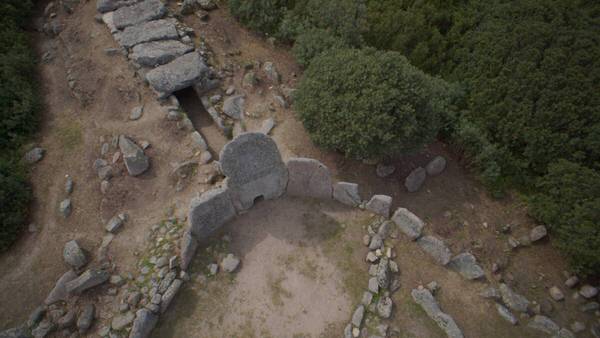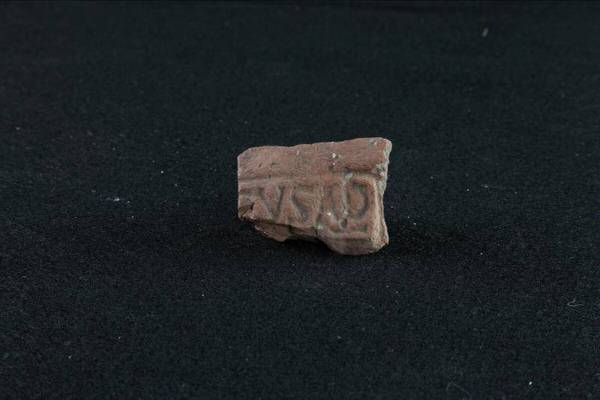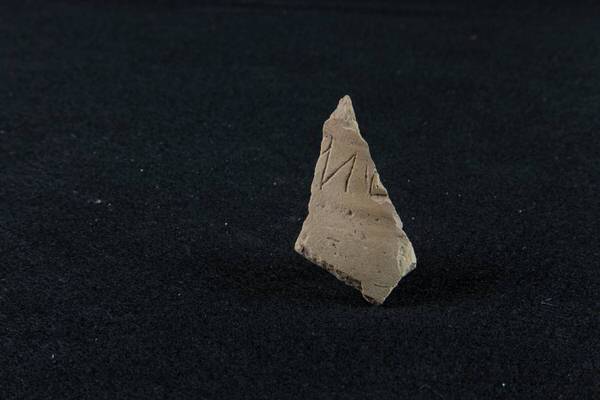The Roman settlement of Thomes
Archaeological research has shown that the Dorgali countryside was intensely inhabited during Roman times, although it has not yet been possible to establish that there was an actual urban centre of particular importance. In the giants’ tomb of Thomes (fig. 1), already known because of the Bronze Age finds (1600-1500 B.C.), traces of a consistent and organised inhabitation during Roman Times (IV century B.C. - IV century A.D.) have been documented.

The residual archaeological deposit brought to light various fragments of pottery, coins and roof tiles (fig. 2) linked to structural remains.

One of the most ancient finds is a wall fragment of an achromatic jug (fig. 3), which still has traces of a graffito inscription dated to the IV-III centuries B.C. (Republican Age).

Bibliografia
- BONINU A., Tomba di giganti di Thomes - Materiali di età romana, in AA.VV., Dorgali. Documenti archeologici, Sassari 1980, p. 103.
- GUIDO F., Tomba di giganti di Thomes - Le monete, in AA.VV., Dorgali. Documenti archeologici, Sassari 1980, pp. 101-102.
- MORAVETTI A., Tombe di giganti nel Dorgalese, in AA.VV., Dorgali. Documenti archeologici, Sassari 1980, pp. 79-100.
- MORAVETTI A., Serra Orrios e i monumenti archeologici di Dorgali, Sardegna Archeologica. Guide e itinerari, 26, Sassari 1998, pp. 75-78, figg. 61-64.
- MORAVETTI A. (a cura di), Carbonia-Fonni, in La Sardegna. I Tesori dell’Archeologia, La Biblioteca della Nuova Sardegna, vol. 3, Sassari 2011, p. 91.
- PULACCHINI D., Il Museo Archeologico di Dorgali, Sardegna Archeologica. Guide e itinerari, 27, Sassari 1998.

 VR
VR